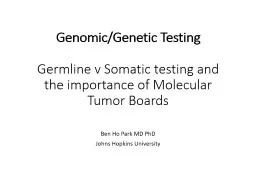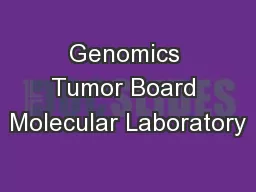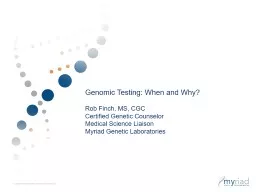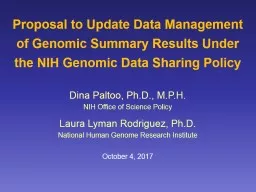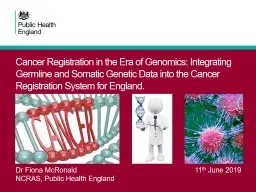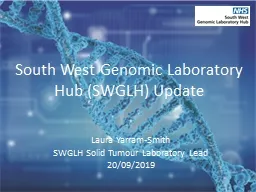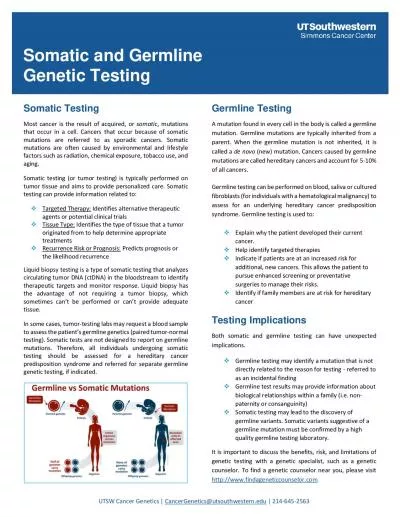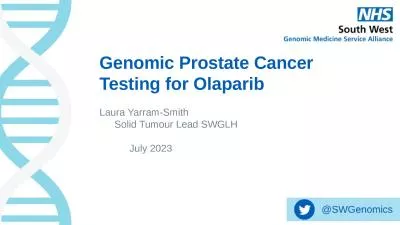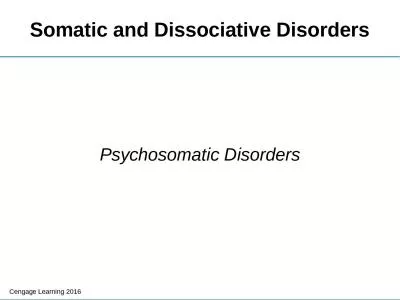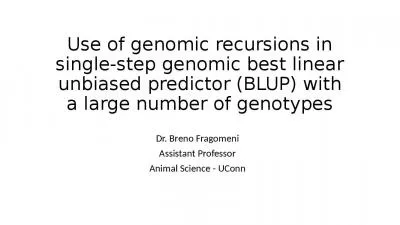PPT-Genomic/Genetic Testing Germline v Somatic testing and the importance of Molecular Tumor
Author : lois-ondreau | Published Date : 2018-09-23
Ben Ho Park MD PhD Johns Hopkins University Financial Disclosures I have financial relationships with commercial entities that are relevant to the content of this
Presentation Embed Code
Download Presentation
Download Presentation The PPT/PDF document "Genomic/Genetic Testing Germline v Somat..." is the property of its rightful owner. Permission is granted to download and print the materials on this website for personal, non-commercial use only, and to display it on your personal computer provided you do not modify the materials and that you retain all copyright notices contained in the materials. By downloading content from our website, you accept the terms of this agreement.
Genomic/Genetic Testing Germline v Somatic testing and the importance of Molecular Tumor: Transcript
Download Rules Of Document
"Genomic/Genetic Testing Germline v Somatic testing and the importance of Molecular Tumor"The content belongs to its owner. You may download and print it for personal use, without modification, and keep all copyright notices. By downloading, you agree to these terms.
Related Documents

